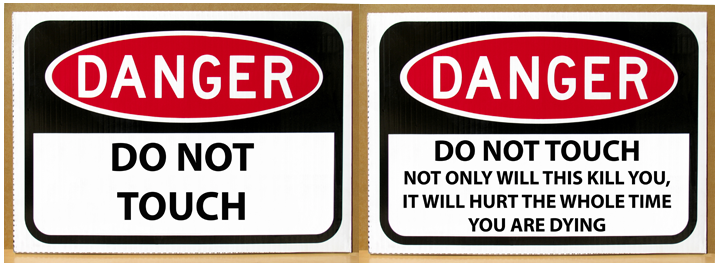I have been blogging for over a year now and one of the subjects that consistently receive the most readers is Boards of Directors and Board & Staff relation. I have decided to delve into this subject deeper with a 3-Part long blog format.
Read:
Have you ever been the victim of being a Board of Directors member or supporting staff?
You have been on a Board of Directors for four meetings and you are already frustrated?
Welcome to Part 1: I didn’t sign up for this!
If ever a group regularly took the blame for the state of the non-profit sector it is Boards of Directors. One can barely read anything published about charities and non-profits without reading something disheartening about Boards of Directors.
You likely have heard the litany of things that Boards of Directors are blamed for: They won’t fundraise; They don’t know their role; They leave their brains at the door; They do things they would never do in their own businesses; etc. To hear that you have to wonder if each and every Board of Directors is in dire need of board development assistance and by extension that each and every individual board members is at fault?
I certainly do not believe that in is fair to place the full burden of this issue at the feet of Board members, but clearly, the degree of dissatisfaction people have with their board experience is trying to tell us something – that the system of “non-profit governance” as we know it is not working.
Maybe it is time to stop looking at governance as a “problem to be solved,” and instead see governance as an “opportunity.” As a great friend once addresses a group of governance volunteers, she said: ‘ the bylaws only prescribe the Council with a couple things it must do … It says nothing about what you can’t do.”
It is time to focus.
Ask board members why they join boards and you will get answers like: They care about the cause; They want to be associated with an honourable organization; and, They want to make a difference.
Now ask those same board members what they talk about at board meetings, and I would bet it is not about caring and making a difference. They are not focusing on what matters most to them, to the organization, and to their communities.
So what has governance been focusing on? To answer that, we need to look at all the functions of being a board.
There are four functions every board addresses in some way or another:
- Leadership: Ensuring the organization is creating as much community impact as possible
- Legal: Ensuring the organization is complying with all its legal obligations.
- Operations: Ensuring the organization’s work is getting done and being done ethically, legally and effectively.
- Board Mechanics: The day-to-day work of what it takes to be a successful board (recruitment, policy-setting, etc.)
Where Are Boards Aiming Their Efforts?
As we consider those 4 functions of board work, some interesting things reveal themselves.
- Only the leadership function is about creating results on behalf of the communities we serve.
- The other three functions – legal oversight, operational oversight, and board mechanics – are all about how the organization does its work.
- Boards are taught that if its financial, the internal means and HR house is in order and the board has talked about its mission at least once during the year – most board evaluations would say that board is “effective.”
In theory an organization could be dubbed “excellent” if it were 100% focused on HR, Finances and the mechanics of Board operations and didn’t help a single client.
The Results
The vast majority of board members volunteer significant amounts of their time to serve on boards because they care about the cause and want to help create change. But given how many Boards operate, what happens to the people who serve on them:
- Organizations lose a valuable strategic resource
Boards could be the inspired champions for creating significant, visionary, long term impact in our communities. They could be the link to all the potential and all the engaged energy of the whole community. Instead, they are “pushing papers around” and eating cold pizza.
- Boards suck the life out of the directors
Because the reason they joined the board is absent from what boards actually focus on, board members everywhere report the same symptoms: Board meetings are dull. They are uninspired. They are focused on things board members neither understand nor care about, even though they know they should.
- Governance is a Recipe for Dysfunction
Emphasizing the busy-work over the strategic goals you wish to achieve creates a check-the-box mentality focused almost exclusively on keeping the organization out of trouble. That results in focusing the Board’s energy on a checklist of all the things that could possibly go wrong instead of all the good things and al of the potential.
So What Is The Answer?
Boards could and should be the single most powerful force for change in nonprofits and the charitable sector. I believe they can achieve this by:
- Focusing first and foremost on providing extraordinary community results by maintaining a laser-like focus on the goals that move towards the organization’s mission and vision.
- Boards, with their staff partners, need to govern towards the achievement of creating extraordinary, visionary, long term impact in their communities and the reason board members signed on in the first place
- Organizations must stop seeing governance as a problem-to-be-solved, and instead view governance as an opportunity to change the world.
- Manage risk and do that job seamlessly, without fear that they have missed something that will come back to harm them later.
Read:
Have you ever been the victim of being a Board of Directors member or supporting staff?
You have been on a Board of Directors for four meetings and you are already frustrated?





